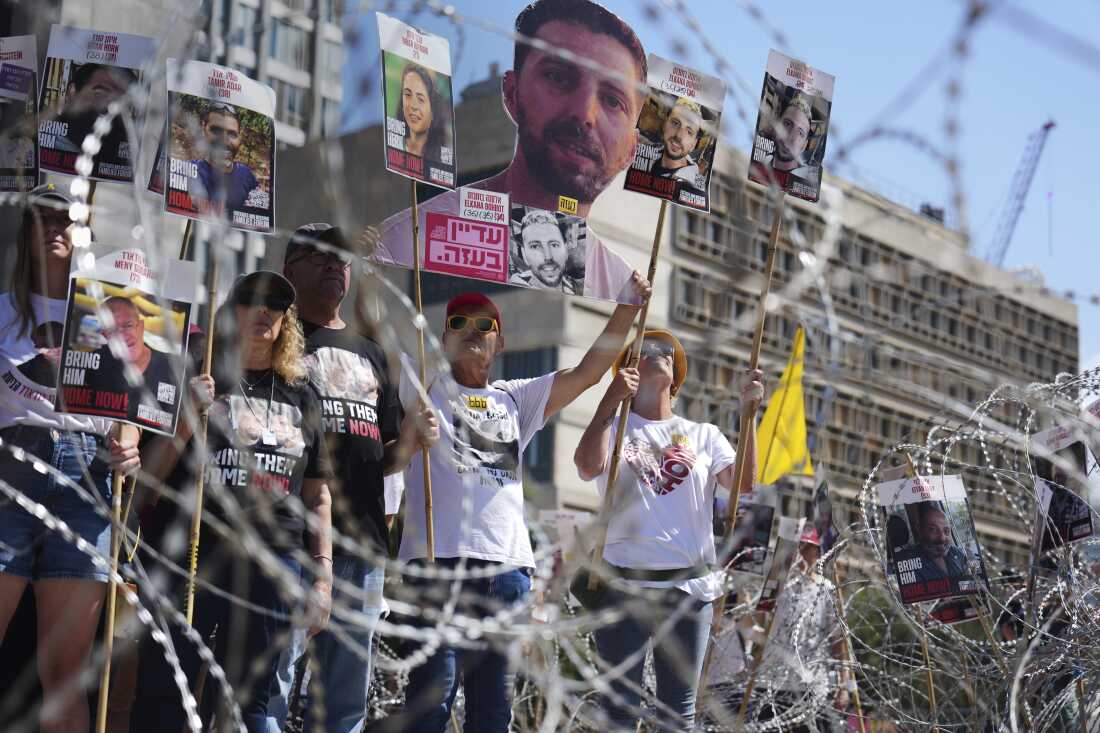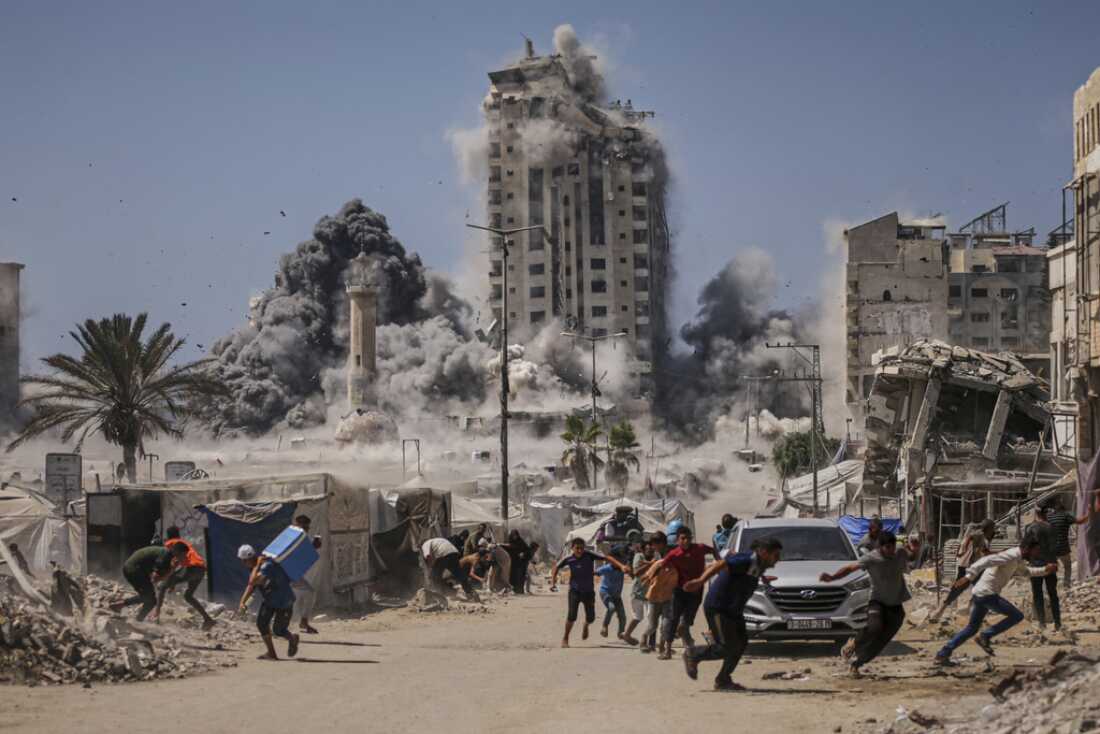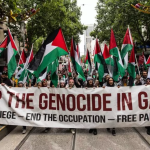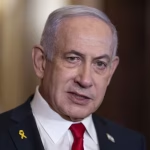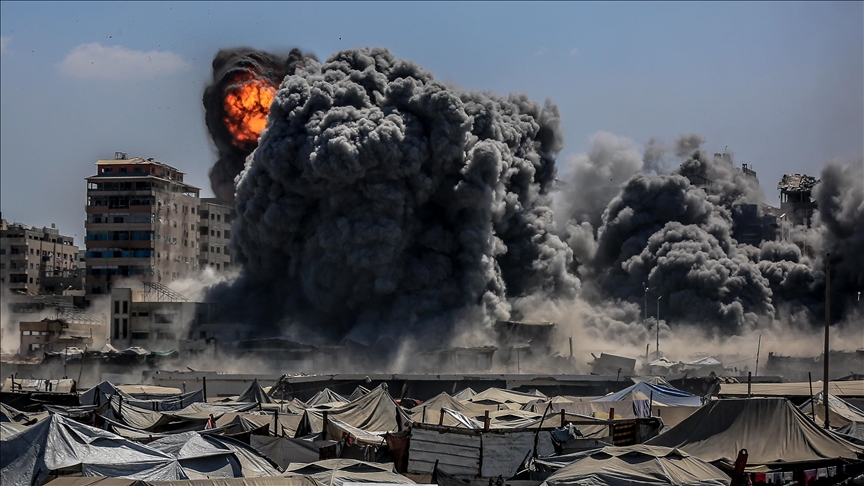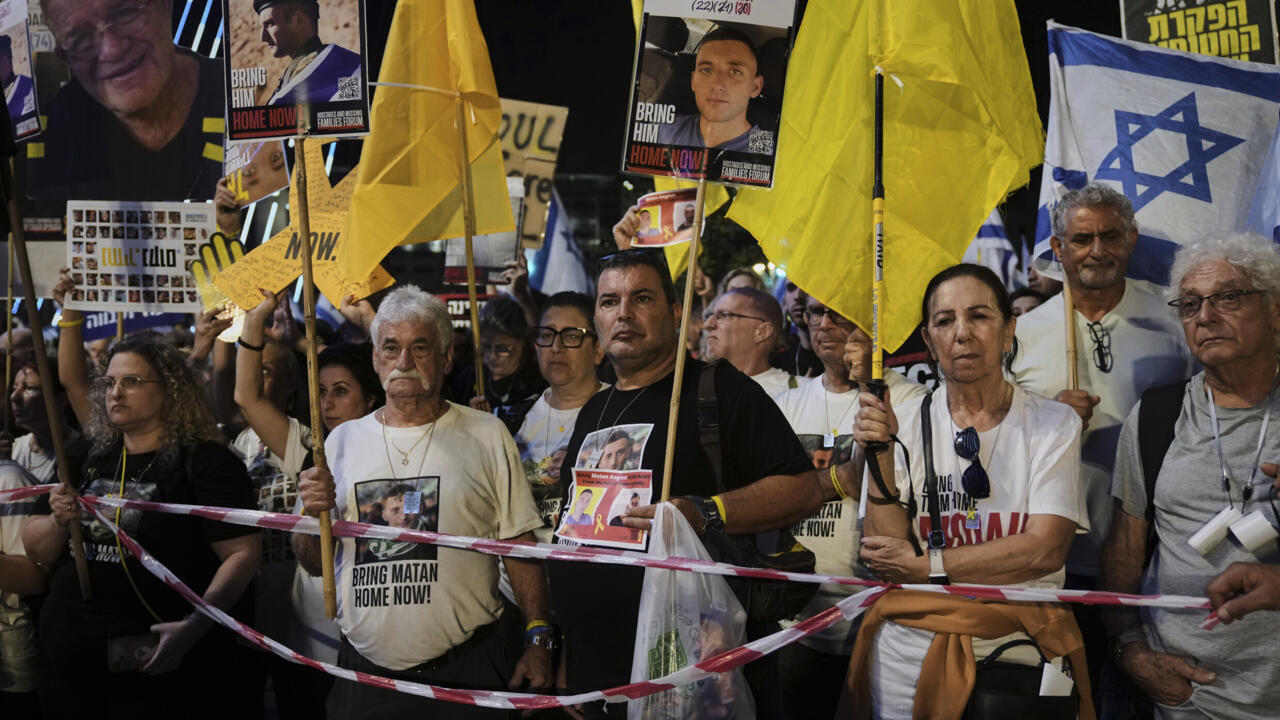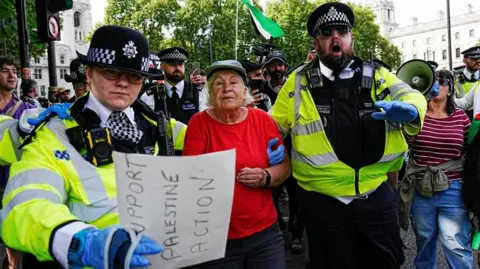The ongoing conflict in Gaza has once again taken a disturbing turn with Hamas publishing a video showing two Israeli hostages held in captivity. This release has sent shockwaves across Israel and the international community, raising questions about the fate of hostages, the strategies of Hamas, and the Israeli government’s approach to negotiations. The video, widely circulated on social media platforms and international news outlets, has reignited the painful hostage crisis debate and brought renewed urgency to calls for a resolution. Beyond the immediate shock value, the video highlights the human cost of the conflict, the geopolitical stakes, and the ongoing struggle between humanitarian concerns and political maneuvering.
- The Release of the Hostage Video
- The Hostage Crisis in Context
- Public Reactions in Israel
- The Political Dimension
- International Reactions
- The Psychological Warfare of Hostage Videos
- Hostage Diplomacy and Hamas’s Strategy
- The Human Cost Behind the Headlines
- Possible Paths Toward Resolution
- The Broader Impact on the Gaza Conflict
- Conclusion: Humanity Over Politics
- FAQs
- What did the Hamas video show?
- Why does Hamas release hostage videos?
- How has Israel responded to the video?
- What role can international actors play in resolving the crisis?
- Has Israel engaged in prisoner swaps before?
- What are the possible outcomes for the current hostages?
- Conclusion
The Release of the Hostage Video
The video released by Hamas depicts two Israeli citizens who were reportedly taken captive during the escalation of violence between Israel and Gaza. Both appear visibly distressed, a clear indication of the psychological toll captivity has taken. For Hamas, the timing of this release seems calculated. Such videos are often used as psychological warfare, designed to pressure the Israeli government, unsettle Israeli citizens, and sway international opinion. The circulation of hostage videos is not new; militant groups have historically used them as leverage to demand prisoner exchanges, humanitarian aid, or political concessions.
According to reports from Israeli officials, the hostages shown in the video are believed to be among dozens captured during Hamas operations over the past year. The Israeli government confirmed the identities of the individuals but emphasized that sharing the footage further risks playing into Hamas’s propaganda tactics. Still, the emotional weight of seeing two of their citizens in captivity has fueled public outcry across Israel, with many families urging Prime Minister Benjamin Netanyahu’s government to prioritize hostage negotiations over military escalation.
The Hostage Crisis in Context
Hostage-taking has long been part of the Israeli-Palestinian conflict, often serving as a brutal bargaining chip in negotiations. Israel has previously engaged in prisoner swaps, the most famous being the 2011 Gilad Shalit exchange, in which Israel freed more than 1,000 Palestinian prisoners in return for one Israeli soldier. Such exchanges have been politically contentious but underscore the immense value both sides place on individuals caught in the crossfire.
The latest video underscores the fragility of current negotiations. Israel has insisted that any release of hostages must be unconditional, while Hamas has consistently tied hostage freedom to concessions, including the release of Palestinian prisoners and easing of blockades in Gaza. These competing demands create a stalemate that leaves the hostages and their families in agonizing uncertainty.
Public Reactions in Israel
The video has deeply unsettled Israeli society, already on edge due to ongoing rocket attacks and military strikes. Families of hostages have held vigils outside government buildings, calling for action and demanding transparency. For many Israelis, the video is not just about two hostages but about a broader crisis of trust between the people and their leaders.
A mother of one of the hostages, speaking to local media, described the footage as both devastating and necessary. “It is proof my son is alive, but it is also a reminder of the government’s failure to bring him home,” she said. Such emotional testimony adds mounting pressure on Israeli officials, who must balance military priorities with humanitarian demands.
The Political Dimension
The hostage video comes at a politically sensitive time for Prime Minister Netanyahu, who faces growing domestic criticism over his handling of the war in Gaza. Opponents accuse him of prioritizing military objectives over the safe return of hostages, while supporters argue that negotiating with Hamas only emboldens the group and weakens Israel’s security position.
Experts suggest that the video was released to deepen these divisions within Israel. Dr. Yossi Mekelberg, a senior analyst in Middle East affairs, noted in a recent interview that “Hamas understands the psychological vulnerability of Israeli society when it comes to hostages. By releasing these videos, they are effectively inserting themselves into Israel’s internal political debate.”
International Reactions
The international community has responded with alarm. The United Nations condemned the use of hostages as bargaining tools and called for their immediate release. The United States, Israel’s closest ally, reaffirmed its stance that Hamas must release all hostages unconditionally while also urging Israel to consider humanitarian measures to reduce the suffering of civilians in Gaza. European leaders echoed similar sentiments, balancing their condemnation of Hamas with calls for restraint in Israel’s military response.
Human rights organizations have also weighed in, stressing that the publication of hostage videos constitutes a violation of international humanitarian law. Amnesty International, for instance, has repeatedly argued that the exploitation of hostages in media campaigns is a form of psychological torture, intended to exploit both the hostages themselves and their families.
The Psychological Warfare of Hostage Videos
Hostage videos have always been a tool of psychological warfare. They are designed not just to show proof of life but to sow fear, division, and despair. For the families, the videos provide both relief and anguish—proof their loved ones are alive but also evidence of their continued suffering. For governments, the videos create political dilemmas: how to reassure citizens without appearing to capitulate to militant groups.
Psychologists studying the impact of hostage videos note that such images often prolong trauma. Families live in a state of suspended grief, unable to move forward, while the wider population experiences collective anxiety. In Israel, where military service and national solidarity are deeply embedded in the culture, hostage crises resonate powerfully across society.
Hostage Diplomacy and Hamas’s Strategy
By releasing this video, Hamas is engaging in what many experts call “hostage diplomacy.” This strategy involves using hostages not only as bargaining chips for direct concessions but also as tools to influence broader negotiations and international narratives. For Hamas, showing the hostages alive serves multiple purposes: pressuring Israel, gaining international media attention, and framing themselves as actors capable of negotiating with global powers.
Hostage diplomacy has been employed by other actors in the region as well, including Iran, which has detained foreign nationals to gain leverage in negotiations with Western countries. The use of hostages as political pawns underscores the extent to which individuals are caught in the machinery of geopolitics, their lives reduced to bargaining chips in high-stakes negotiations.
The Human Cost Behind the Headlines
Behind the politics, strategies, and propaganda lies the undeniable human cost. The two hostages featured in the video are individuals with families, friends, and lives disrupted by forces far beyond their control. Their plight highlights the personal tragedies embedded within broader geopolitical conflicts.
One Israeli hostage’s brother, speaking on television, broke down as he pleaded for international intervention. “He is not a soldier anymore. He is just my brother, a human being. We need him home.” Such raw emotion underscores the urgency of finding solutions that prioritize human life over political gain.
Possible Paths Toward Resolution
The question remains: what can be done to resolve the crisis? Several potential pathways exist, though none are without challenges.
- Negotiated Prisoner Swap: Israel has historically engaged in prisoner swaps, though such deals are politically polarizing. A swap would require Israel to release Palestinian prisoners, something Netanyahu’s government may resist but could be forced into under public pressure.
- International Mediation: Countries like Qatar, Egypt, and Turkey have often played mediator roles in hostage negotiations between Israel and Hamas. International actors could help broker a deal that allows hostages to be freed while easing tensions on both sides.
- Military Rescue Operations: Israel’s military has the capacity to conduct high-risk rescue missions. However, such operations carry immense risk to the hostages and could result in tragic outcomes, as seen in past attempts.
Each of these paths comes with risks and potential backlash, but the video has underscored that inaction is no longer acceptable to many Israelis.
The Broader Impact on the Gaza Conflict
The hostage video is not an isolated incident but part of the larger tapestry of the Gaza conflict. As the war drags on, with thousands of civilians killed and widespread destruction across Gaza, the hostage issue adds another layer of complexity to already fraught negotiations. For Hamas, holding hostages provides leverage not just against Israel but also against international actors seeking to broker peace. For Israel, the safe return of its citizens is both a moral obligation and a political necessity.
Conclusion: Humanity Over Politics
The release of the video showing two Israeli hostages in Gaza has thrust the human dimension of the conflict back into global focus. Beyond the political calculations and strategic maneuvering, the plight of the hostages underscores the devastating personal toll of the Gaza war. Families wait in anguish, governments face impossible choices, and ordinary people continue to bear the brunt of decisions made in the corridors of power.
As the hostage crisis deepens, the world is reminded that in war, it is always civilians—on both sides—who suffer the most. The challenge for leaders in Israel, Hamas, and the international community is to move beyond propaganda and political posturing and prioritize humanity. Only through compassion, negotiation, and an unwavering commitment to protecting life can the cycle of violence be broken and hope restored for those caught in its grip.
FAQs
What did the Hamas video show?
The video published by Hamas showed two Israeli hostages in captivity in Gaza. Both appeared distressed but alive, which served as proof of life while also raising concerns about their wellbeing and conditions.
Why does Hamas release hostage videos?
Hamas uses hostage videos as a tool of psychological warfare and negotiation. They serve to pressure the Israeli government, unsettle Israeli citizens, and gain international attention.
How has Israel responded to the video?
The Israeli government confirmed the identities of the hostages but urged citizens not to share the video to avoid amplifying Hamas propaganda. At the same time, public pressure has increased on the government to secure their release.
What role can international actors play in resolving the crisis?
Countries like Egypt, Qatar, and Turkey have historically mediated hostage negotiations between Israel and Hamas. International involvement may help broker agreements that balance humanitarian concerns with political demands.
Has Israel engaged in prisoner swaps before?
Yes, Israel has a history of prisoner swaps, the most notable being the 2011 Gilad Shalit deal, where over 1,000 Palestinian prisoners were exchanged for one Israeli soldier. Such swaps remain politically controversial but have been used as solutions in the past.
What are the possible outcomes for the current hostages?
Potential outcomes include negotiated prisoner swaps, international mediation leading to a humanitarian release, or military rescue operations by Israel. Each carries risks and depends on the willingness of both sides to compromise.
Conclusion
The video of two Israeli hostages in Gaza serves as a stark reminder of the human suffering at the heart of the conflict. While Hamas uses hostages as leverage and Israel grapples with its response, families remain in anguish, caught between hope and despair. The international community’s role is crucial in pressuring both sides to prioritize humanity over politics. Ultimately, peace and resolution can only be achieved when human lives are valued above strategic advantage, and until that happens, the cycle of pain will persist.

